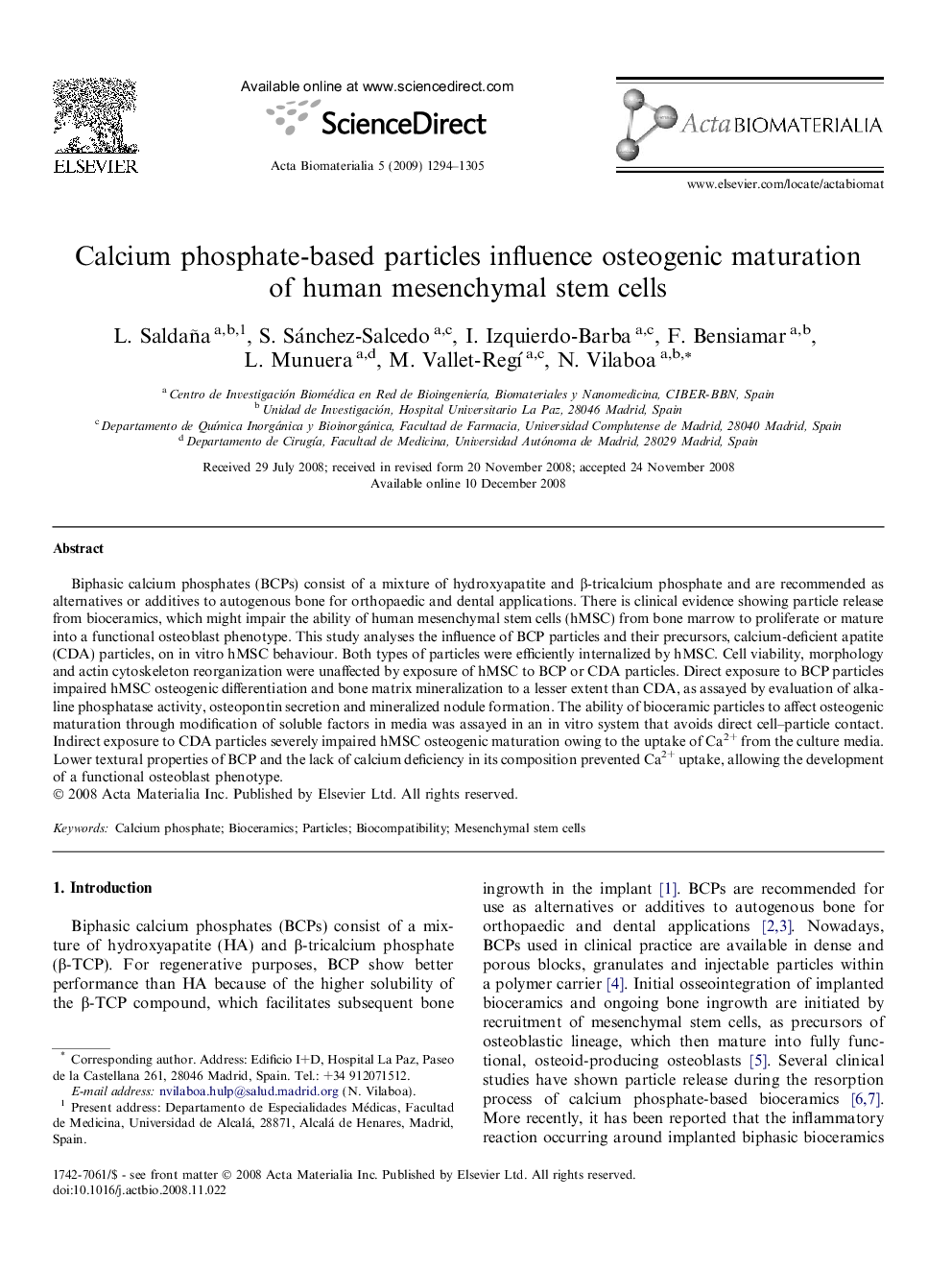| Article ID | Journal | Published Year | Pages | File Type |
|---|---|---|---|---|
| 1531 | Acta Biomaterialia | 2009 | 12 Pages |
Biphasic calcium phosphates (BCPs) consist of a mixture of hydroxyapatite and β-tricalcium phosphate and are recommended as alternatives or additives to autogenous bone for orthopaedic and dental applications. There is clinical evidence showing particle release from bioceramics, which might impair the ability of human mesenchymal stem cells (hMSC) from bone marrow to proliferate or mature into a functional osteoblast phenotype. This study analyses the influence of BCP particles and their precursors, calcium-deficient apatite (CDA) particles, on in vitro hMSC behaviour. Both types of particles were efficiently internalized by hMSC. Cell viability, morphology and actin cytoskeleton reorganization were unaffected by exposure of hMSC to BCP or CDA particles. Direct exposure to BCP particles impaired hMSC osteogenic differentiation and bone matrix mineralization to a lesser extent than CDA, as assayed by evaluation of alkaline phosphatase activity, osteopontin secretion and mineralized nodule formation. The ability of bioceramic particles to affect osteogenic maturation through modification of soluble factors in media was assayed in an in vitro system that avoids direct cell–particle contact. Indirect exposure to CDA particles severely impaired hMSC osteogenic maturation owing to the uptake of Ca2+ from the culture media. Lower textural properties of BCP and the lack of calcium deficiency in its composition prevented Ca2+ uptake, allowing the development of a functional osteoblast phenotype.
